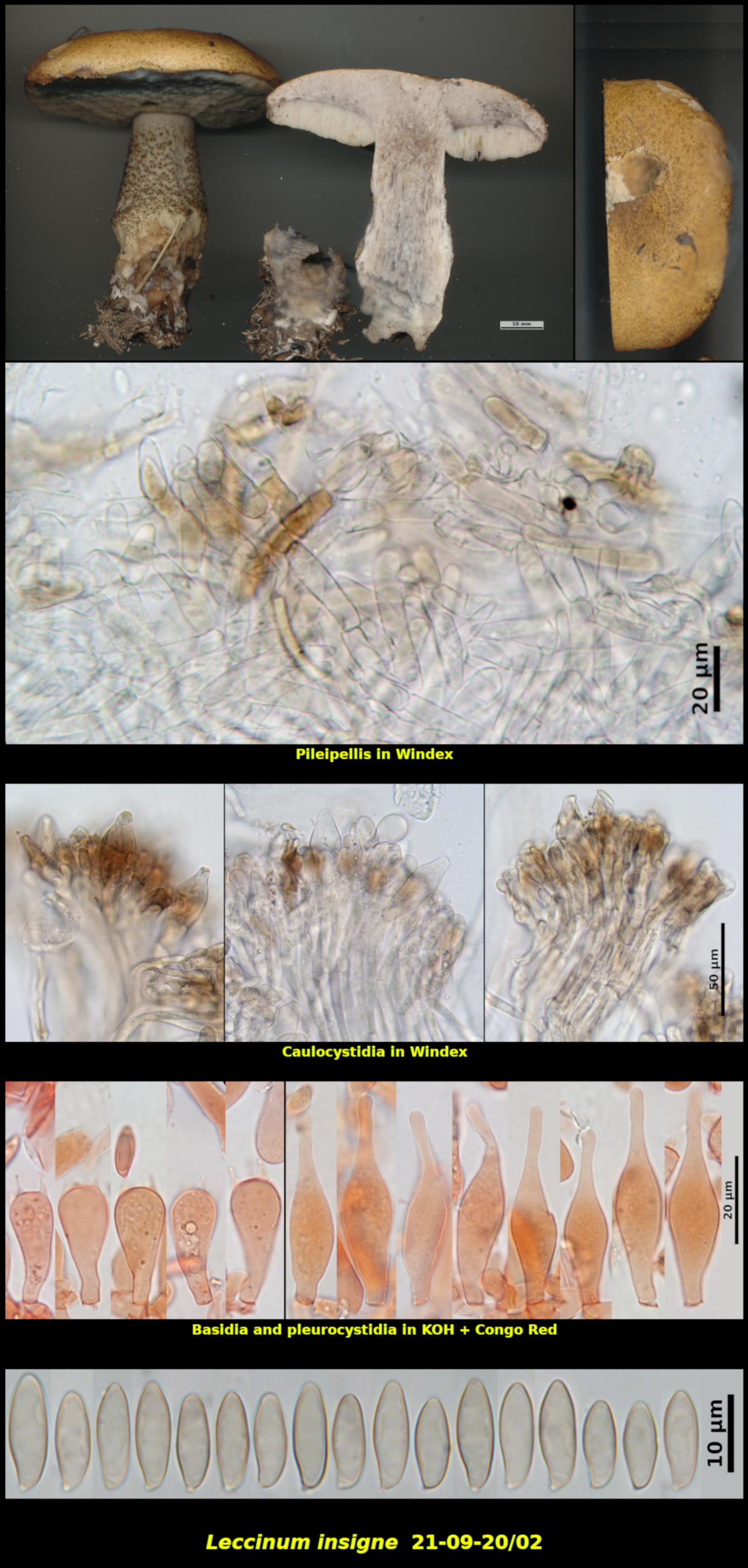Fleshy Fungi of New Brunswick >>
Leccinum insigne
Leccinum insigne A.H. Sm., Thiers & Watling

Solitary in soil beside path, associated with Populus tremuloides, Abies balsamea and Corylus cornuta, Wilson Brook Protected Natural Area, New Brunswick (21-09-20/02).
Pileus broadly convex, without an umbo, with marging overhanging only very slightly (up to 2 mm), dry, finely scaly with orange brown (HSV30:70:40-50) scales over a yellow orange (HSV45:10-15:100) ground colour, 70 mm in diameter. Stipe clavate-ventricose, densely scabrous with dark red brown (HSV20:70-80:40-50) scales, dry, 50-60 x 17-18 mm. Pores pale yellow (HSV55:05:95), paler at the tube mouths, about 3-4/mm, adnexed. Flesh white when first cut, soon turning grey in both pielus and stipe, lacking a distinctive odour and taste.
Basidiospores light brown in a weak spore print, spindle-shaped, boletoid, smooth, 10.6-16.0 x 4.1-5.1 µm, Q = 2.46-3.43 (average[48]: 13.0 x 4.5 µm, Q = 2.88). Pleurocystidia abundant, lageniform, 40-50 x 9.3-12.6 µm. Basidia 4-spored, clavate, 25-28 x 10.0-11.7 µm. Pileipellis a trichodermium. Clamp connections absent on all septa.
Leccinum insigne is commonly reported as an associate of Populus tremuloides. Although not very evident in the photo, the pileipellis hangs beyond the margin of the pileus to form a ragged fringe, a characteristic of members of Leccinum Section Leccinum. The species is thought to be quite variable in colour and has been subdivided into six "forms" by Smith and Thiers (The Boletes of Michican, 1971). Collection 21-09-20/02 resembles forma ochraceum based on the yellow to orange yellow colour of the pileus. However, the six forms were not formally (legitimately) named and have not been investigated using genetic methods. Leccinum insigne might be confused with L. aurantiacum, another associate of aspen having an orange pileus, but differs in the colour changes of the cut stipe. When the stipe is cut open, the flesh of L. insigne turns grey, while that of L. aurantiacum develops reddish colours.